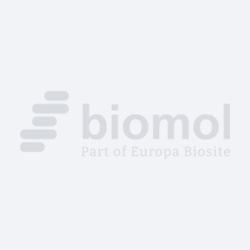Cookie-Einstellungen
Diese Website benutzt Cookies, die für den technischen Betrieb der Website erforderlich sind und stets gesetzt werden. Andere Cookies, die den Komfort bei Benutzung dieser Website erhöhen, der Direktwerbung dienen oder die Interaktion mit anderen Websites und sozialen Netzwerken vereinfachen sollen, werden nur mit Ihrer Zustimmung gesetzt.
Konfiguration
Technisch erforderlich
Diese Cookies sind für die Grundfunktionen des Shops notwendig.
"Alle Cookies ablehnen" Cookie
"Alle Cookies annehmen" Cookie
Ausgewählter Shop
CSRF-Token
Cookie-Einstellungen
FACT-Finder Tracking
Individuelle Preise
Kundenspezifisches Caching
Session
Währungswechsel
Komfortfunktionen
Diese Cookies werden genutzt um das Einkaufserlebnis noch ansprechender zu gestalten, beispielsweise für die Wiedererkennung des Besuchers.
Facebook-Seite in der rechten Blog - Sidebar anzeigen
Merkzettel
Statistik & Tracking
Endgeräteerkennung
Kauf- und Surfverhalten mit Google Tag Manager
Partnerprogramm

| Artikelnummer | Größe | Datenblatt | Manual | SDB | Lieferzeit | Menge | Preis |
|---|---|---|---|---|---|---|---|
| M2767-20C.100 | 100 µg | - | - |
3 - 19 Werktage* |
743,00 €
|
Bei Fragen nutzen Sie gerne unser Kontaktformular.
Bestellen Sie auch per E-Mail: info@biomol.com
Größere Menge gewünscht? Bulk-Anfrage
Bestellen Sie auch per E-Mail: info@biomol.com
Größere Menge gewünscht? Bulk-Anfrage
MD-2 enables TLR4 to respond to a wide variety of LPS partial structures, Gram-negative bacteria,... mehr
Produktinformationen "Anti-MD-2 (MD-2 Protein, ESOP1, ESOP-1, Lymphocyte Antigen 96, LY96)"
MD-2 enables TLR4 to respond to a wide variety of LPS partial structures, Gram-negative bacteria, and Gram-positive lipoteichoic acid, but not to Gram-positive bacteria, peptidoglycan, and lipopeptide. Toll Like Receptors (TLRs) are the mammalian homologues of the Drosophila Toll protein, which is a transmembrane receptor. TLR2 and TLR4 are essential components for recognition of distinct bacterial cell wall components. TLRs have been shown to participate in the recognition of pathogens by the innate immune system. The cytoplasmic domain of TLR2 can form functional pairs with TLR6 or TLR1, and this interaction leads to cytokine induction. TLR6, TLR2, and TLR1 are recruited to macrophage phagosomes that contain IgG-coated erythrocytes that do not display microbial components. TLRs sample the contents of the phagosome independent of the nature of the contents, and can establish a combinatorial repertoire to discriminate among the large number of pathogen-associated molecular patterns found in nature. Bacterial components elicit the activation of an intracellular signaling cascade via TLR in a way similar to that which occurs upon ligand binding to the IL-1 receptor. This signaling pathway leads to the activation of a transcription factor NF-_B and c-Jun N-terminal kinase (JNK), which initiate the transcription of pro-inflammatory cytokine genes. TLRs and the downstream signaling pathway play a key role in innate immune recognition and in the subsequent activation of adaptive immunity. Applications: Suitable for use in Western Blot and Immunohistochemistry. Other applications not tested. Recommended Dilution: Western Blot: 0.5-2ug/ml (mouse spleen cell lysate), Immunohistochemistry: 2ug/ml (rat spleen cells). , Optimal dilutions to be determined by the researcher. Storage and Stability: May be stored at 4°C for short-term only. For long-term storage and to avoid repeated freezing and thawing, add sterile glycerol (40-50%), aliquot and store at -20°C. Aliquots are stable for at least 12 months at -20°C. For maximum recovery of product, centrifuge the original vial after thawing and prior to removing the cap. Further dilutions can be made in assay buffer. ,
| Schlagworte: | Anti-Ly-96, Anti-Protein MD-2, Anti-Lymphocyte antigen 96 |
| Hersteller: | United States Biological |
| Hersteller-Nr: | M2767-20C |
Eigenschaften
| Anwendung: | IHC, WB |
| Antikörper-Typ: | Polyclonal |
| Konjugat: | No |
| Wirt: | Rabbit |
| Spezies-Reaktivität: | human, mouse, rat |
| Immunogen: | Peptide corresponding to amino acids near the middle region of human MD-2 (GenBank accession no. NP_056179). |
| Format: | Highly Purified |
Datenbank Information
| KEGG ID : | K05400 | Passende Produkte |
| UniProt ID : | Q9Y6Y9 | Passende Produkte |
| Gene ID : | GeneID 23643 | Passende Produkte |
Handhabung & Sicherheit
| Lagerung: | +4°C |
| Versand: | +4°C (International: +4°C) |
Achtung
Nur für Forschungszwecke und Laboruntersuchungen: Nicht für die Anwendung im oder am Menschen!
Nur für Forschungszwecke und Laboruntersuchungen: Nicht für die Anwendung im oder am Menschen!
Hier folgen Informationen zur Produktreferenz.
mehr
Hier kriegen Sie ein Zertifikat
Loggen Sie sich ein oder registrieren Sie sich, um Analysenzertifikate anzufordern.
Bewertungen lesen, schreiben und diskutieren... mehr
Kundenbewertungen für "Anti-MD-2 (MD-2 Protein, ESOP1, ESOP-1, Lymphocyte Antigen 96, LY96)"
Bewertung schreiben
Loggen Sie sich ein oder registrieren Sie sich, um eine Produktbewertung abzugeben.
Zuletzt angesehen


![Anti-MD-2, clone [1A2E3] Anti-MD-2, clone [1A2E3]](https://www.biomol.com/media/image/05/4a/a8/200-301-CS4_200x200.jpg)
![Anti-MD-2, clone [9F1B1] Anti-MD-2, clone [9F1B1]](https://www.biomol.com/media/image/e5/8b/79/200-301-CS5_200x200.jpg)
